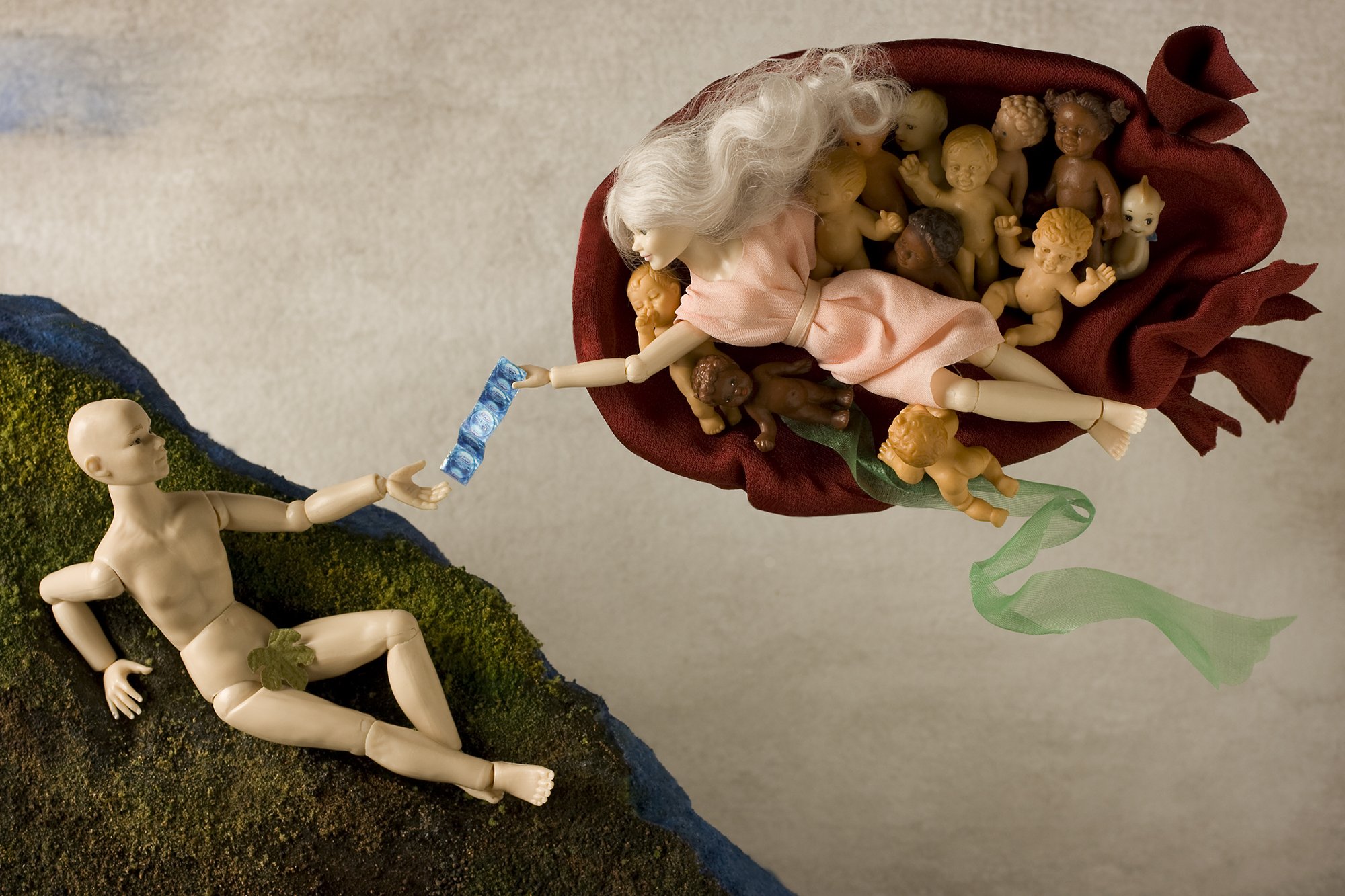Grace Weston
Medusa’s Vanity ©Grace Weston
Text and Images by Grace Weston
Interview by Ora Heard
How did your series Reclaiming the Muse come to be?
It developed rather organically. I had restaged a favorite photograph, Kertesz’ Satiric Dancer, first as a literal recreation of the original, but in miniature and in color. Then, I became curious about his muse. She seemed like such a fun-loving and game subject. Who was she? In researching, I discovered her name, Magda Förster, and that she had a very successful career in her own right as a cabaret performer. But we rarely, if ever, hear of her, while Kertesz’ fame and photo lived on. I then fantasized what her life became after her wild days. Did she settle down, marry, have kids? Is life a cabaret, after all?
Over time, I pondered more muses in art, and started reading about mythology with a feminist eye, noticing how these stories nearly always advantaged and glorified men, while women were troublesome, either because of their distracting beauty, their curiosity, their jealousy, or their rage (often justified).
Mother’s Day (after Kertesz) ©Grace Weston
This series reimagines famous works in a contemporary setting from the point of view of the female muse. How do you decide what their backstory will be? Is it always rooted in the original story/mythology?
I usually start with research. For example, I looked at numerous paintings and sculptures of Leda and the Swan and read the mythology behind the imagery. Zeus (a serial rapist throughout mythology) disguised himself as a swan, to rape Leda. In artworks, the act is frequently depicted as a seduction, showing a joyfully compliant Leda. In my updated take on the scenario, my Leda is neither compliant nor a victim. The Swan may plead, cajole, deceive, or use force, but Leda is steadfast and plans to hold her own.
Some are rooted in the original story (No Means No/Leda and the Swan, Judy and Holofernes), some I conjured up (House of Atlas), and some merely reference the original painting, while switching genders (The Bird, Ceci N’est pas Un Homme, Divine Intervention, The Bird.) In all of them, I try to give it a twist, empower the muse, and/or tell her point of view more fully.
No Means No (Leda and the Swan) ©Grace Weston
Your work utilizes miniatures and dolls. Were there any challenges that came up while using such materials?
There are many challenges working with small, lightweight figures and props. They do not want to stay put. At times, I must weight or string characters to keep them in place. I look for figures that are as articulated as possible to affect gesture, but they still have limits. Facial expressions don’t always fit what I‘m going for. I prefer to do as much by hand and in camera as possible (as opposed to Photoshop,) so I am studying doll face repainting techniques. I also prefer not to show too much of a very well-known doll’s face (such as Barbie), because too much prior association distracts from the intended representation of my character.
It’s all very meticulous work, considering how the photo will enlarge and reveal every little detail. It requires a lot of patience, but it suits my personality, and when I achieve what I envisioned, it’s extremely rewarding.
Divine Intervention (after Michelangelo) ©Grace Weston
What do you want the viewer to take away from this series?
There’s another side to the stories we’ve been told. Female characters in old stories and artists’ muses throughout history deserve their own full and interesting lives, as well as their own points of view. The Western male view of women, usually reduced to simple objects of beauty, has dominated the art history books of the past. Attention is being brought to this imbalance, as well as the long-overlooked legitimacy of art made by women. It’s past time for the re-evaluation of stories blindly accepted generation after generation.
Colossa ©Grace Weston
Describe your creative process in one word?
Exhilarating.
The Bird (after Jacques-Louis David) ©Grace Weston
What inspires you to pursue image-making?
The need to express my constantly churning thoughts, views, and the humor underlying our absurd world.
Ceci N’est Pas Un Homme (after Magritte) ©Grace Weston
What was the last book you read or film you saw that inspired you?
The Story of Art Without Men by Katy Hessel.
Three Graces ©Grace Weston
What advice would you give to people just starting out in photography?
Every person is unique. Be true to yourself. Express from who you are. Spend the time needed to find your voice. Keep going, and eventually it will come forth. Please yourself, don’t worry about what other people think.
Night Mère (after Henry Fuseli) ©Grace Weston
What is your favorite podcast to listen to?
I get a kick out of the Smartless guys.
House of Atlas ©Grace Weston
How do you take your coffee?
It’s a large mug of PG Tips tea for me, with one sugar.

















